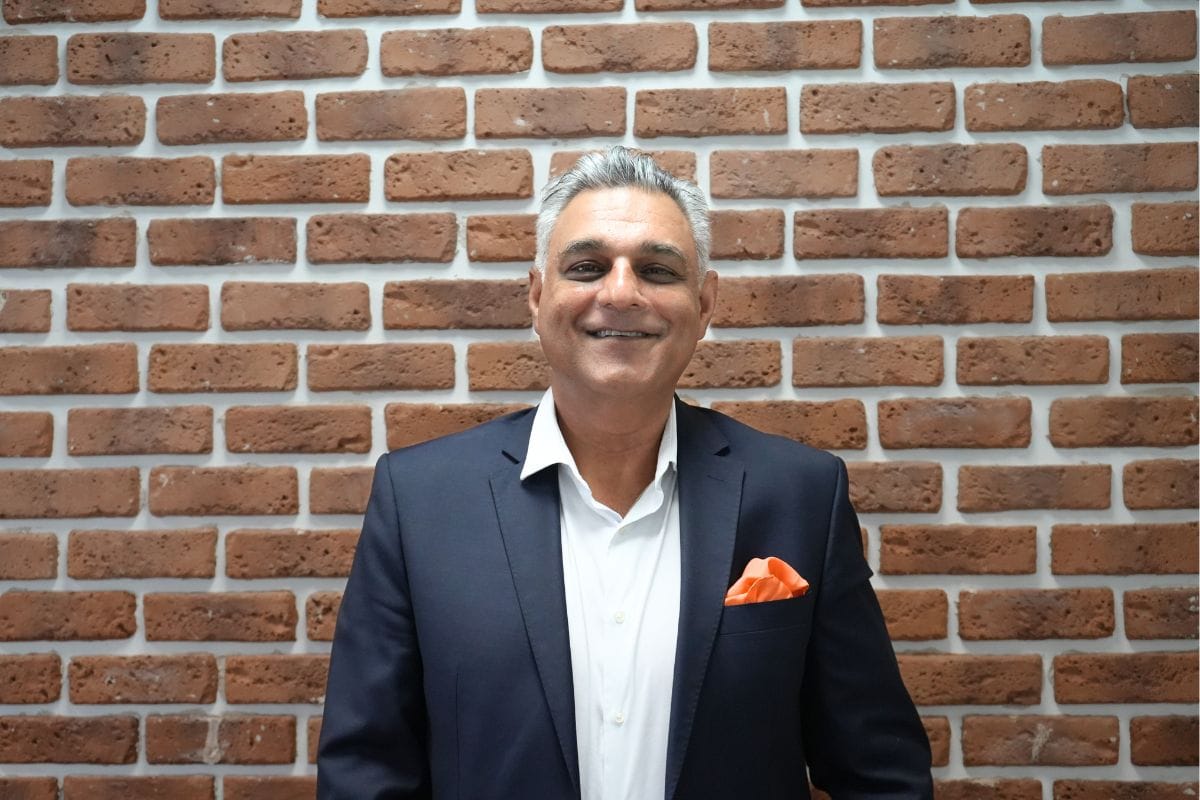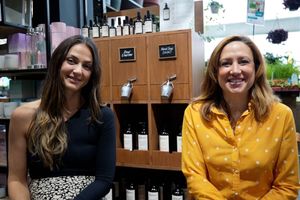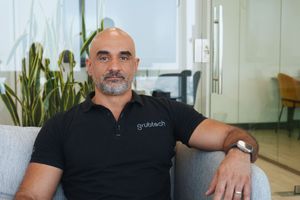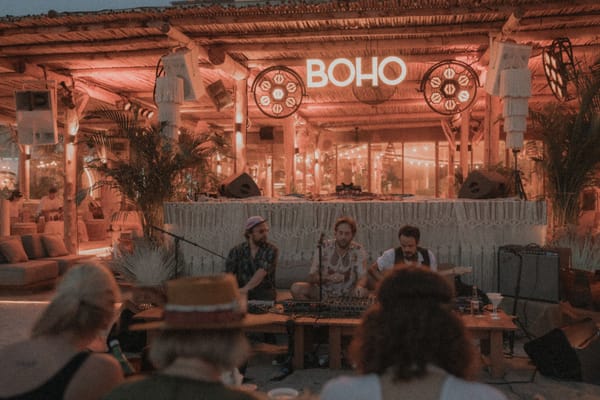With the sustainability and food security talks around the corner, the spotlight turns to Bustanica, a trailblazer in the world of agriculture situated in the heart of Dubai. Exemplified by its hydroponic technology, Bustanica’s vertical farming model stands at the forefront of rethinking traditional agriculture.
Explore the innovative farming model at Bustanica with Feras Al Soufi, General Manager, as he shares the groundbreaking technologies and sustainable practices that set this hydroponic vertical farm apart from traditional farming methods.
Innovative Model of Farming

Recognized as the world's largest vertical farm, Bustanica operates on a hydroponic model within a controlled agricultural environment. This innovative approach yields a remarkable 95% reduction in water usage compared to conventional farming practices. Al Soufi explains,
“For you to grow conventionally, 1 kg of lettuce would require around 317 liters of water. At Bustanica, we would require only between 15 to 17 liters of water.”
The key to this efficiency lies in Bustanica's closed-loop water system. As plants grow, they release humidity and lose water. At Bustanica, this humidity is captured, condensed, and reused through their HVAC system. This closed-loop mechanism ensures minimal water loss, significantly outperforming traditional farming methods.
Bustanica's commitment to sustainability extends far beyond water conservation. By incorporating innovative models into farming, Bustanica has been able to contribute to sustainability in a significant manner. The farm is able to harvest a remarkable 3 tons of leafy greens every day. It achieves this within a space of 10,000 square meters spread across three floors. This is a significant difference compared to the vast 470,000 square meters of land needed for a traditional farm of the same output. By adopting a cyclical harvest approach, where each seed yields a minimum of three harvests, Bustanica maximizes resource utilization. This noteworthy space efficiency directly addresses the environmental impact of agricultural expansion.
Quality Assurance

Al Soufi explains how Bustanica’s commitment to sustainability extends to packaging, where recyclable materials are prioritized, aligning with eco-friendly principles. Bustanica also offers consumers a ready-to-eat experience with their clean leafy greens. He says,
“The most important thing is zero pesticide, zero herbicide, zero chemical usage on all of our products, which makes them ready to eat right out of the box.”
Growing without the use of pesticides, herbicides, and fungicides is a formidable challenge, but Bustanica tackles it head-on. Over a decade of research and development, in collaboration with partners, has refined their cultivation methods. As a result of the extensive research, the team at Bustanica understands the precise timing for harvesting, typically within 4 to 28 days.
Al Soufi says,
“We make sure that we harvest at peak nutrition. And because we are a soilless facility and the water always touches the roots directly, it is a hydroponic method with the right amount of nutrients inside the water specified for each cultivar that we grow.”
Compared to the conventional farming method, this methodology accelerates plant growth by 20% as well as guarantees that the harvested crops maintain their peak nutritional value. With the results of their study, Bustanica is able to offer the market its leafy greens full of flavors, freshness, and crispiness.
Boosting the local economy

Bustanica plays a pivotal role in bolstering the local economy and employment landscape in Dubai. Their role also aligns with the UAE's forward-looking food security strategy for 2050. Producing a substantial 3000 kilograms of fresh produce daily, Bustanica aims to significantly decrease the reliance on imported food, which currently constitutes 80 to 90% of the region's consumption.
The General Manager of Bustanica, Feras, says,
“Making those farms, whether they are vertical, conventional, or any other method, contributes to reducing the amount of food importation, supporting the food security initiative and strategy of the UAE, set for 2050.”
Additionally, Bustanica actively supports the water security strategy of the UAE, contributing to the objectives outlined for 2036.
IoT-based farming systems

Bustanica employs state-of-the-art IoT-based farming systems and data analytics to optimize crop quality and yield. Spanning over a decade, their research and development have resulted in the implementation of cutting-edge technology in the construction of the world's largest vertical farm. Al Soufi says,
“Everything over here we grow is 100% automated in terms of growing those cultivars.”
Encompassing 27 isolated farms, the entire cultivation process within Bustanica is 100% automated. Each of these farms is meticulously controlled for factors such as humidity, temperature, nutrient levels tailored to specific cultivars, and light adjustments imitating natural day and night cycles. The isolation extends to the racks within each farm, with 21 racks per farm. This is to ensure that any issues remain contained and do not impact other crops.
Bustanica also boasts an automated nutrient monitoring system, where samples are sent to a testing room every 8 hours. The system also makes adjustments to maintain optimal nutrient levels without human intervention. By integrating these innovations, Bustanica is able to produce high-quality produce consistently.
Beyond organic

In a world where consumers are increasingly conscious of their food choices, Bustanica positions itself as ‘beyond organic’. The farming approach aligns with the surging consumer demand for healthier and more sustainable food options. They prioritize harvesting during the peak season to maximize nutritional value. The farm boasts a skilled team with extensive global experience that ensures meticulous care and production of high-quality produce. This commitment resonates with the increasing expectations of consumers who seek wholesome and sustainably sourced products. They are ready to serve the UAE community which includes various sectors like aviation, catering, hotels, restaurants, coffee shops, and retailers.
In addressing the challenges of implementing vertical farming on a large scale, Bustanica labels difficulties as potential opportunities. Feras asserts that any issue encountered is approached with the right mindset and solutions. The process includes continuously exploring different aspects, starting with growing a few types of plants and expanding to a diverse collection, which now includes microgreens and edible flowers. The strategy is not solely rooted in technological advancements but also underscores the crucial role played by a dedicated team of plant scientists. In this way, Bustanica is able to diversify its portfolio according to the market demands and needs.
Sustaianability at its core

Bustanica emerges as a beacon of sustainability, addressing 12 out of the 17 UN Sustainable Development Goals. The farm's innovative practices resonate with key global objectives, particularly in terms of efficient space utilization. With a compact footprint of 10,000 square meters over three floors, Bustanica manages to harvest an impressive 3000 kilos of produce daily. The significance of this space-saving approach becomes even more pronounced in regions where arable land is scarce, with less than 1% availability.
Beyond land conservation, Bustanica has also achieved a remarkable 95% reduction in water usage, a critical consideration in areas like Dubai which is heavily reliant on desalinated water and facing freshwater scarcity. The farm's practice of harvesting more than three cycles from the same seed exemplifies a sustainable approach that aligns seamlessly with the UN's sustainability strategy.
Shaping the future of agriculture

Looking into the future, Al Soufi envisions Bustanica's innovations influencing global agriculture. The exponential growth of the global population, projected to reach nearly 10 billion by 2050, necessitates a reevaluation of traditional farming practices. The challenges of diminishing arable lands and escalating water scarcity underscore the urgency to adopt sustainable agricultural solutions. He continues,
“I believe vertical farming, such as Bustanica, is the future of agriculture because we make sure that we save on water, we utilize the space, we produce the right number of leaves at the right nutrition values because of the method that we use to control the environment in which we grow.”
Bustanica is not here to compete but to collaborate, share knowledge, and pave the way for a future where vertical farming becomes the norm rather than the exception.
Watch the Interview
Also Read:















